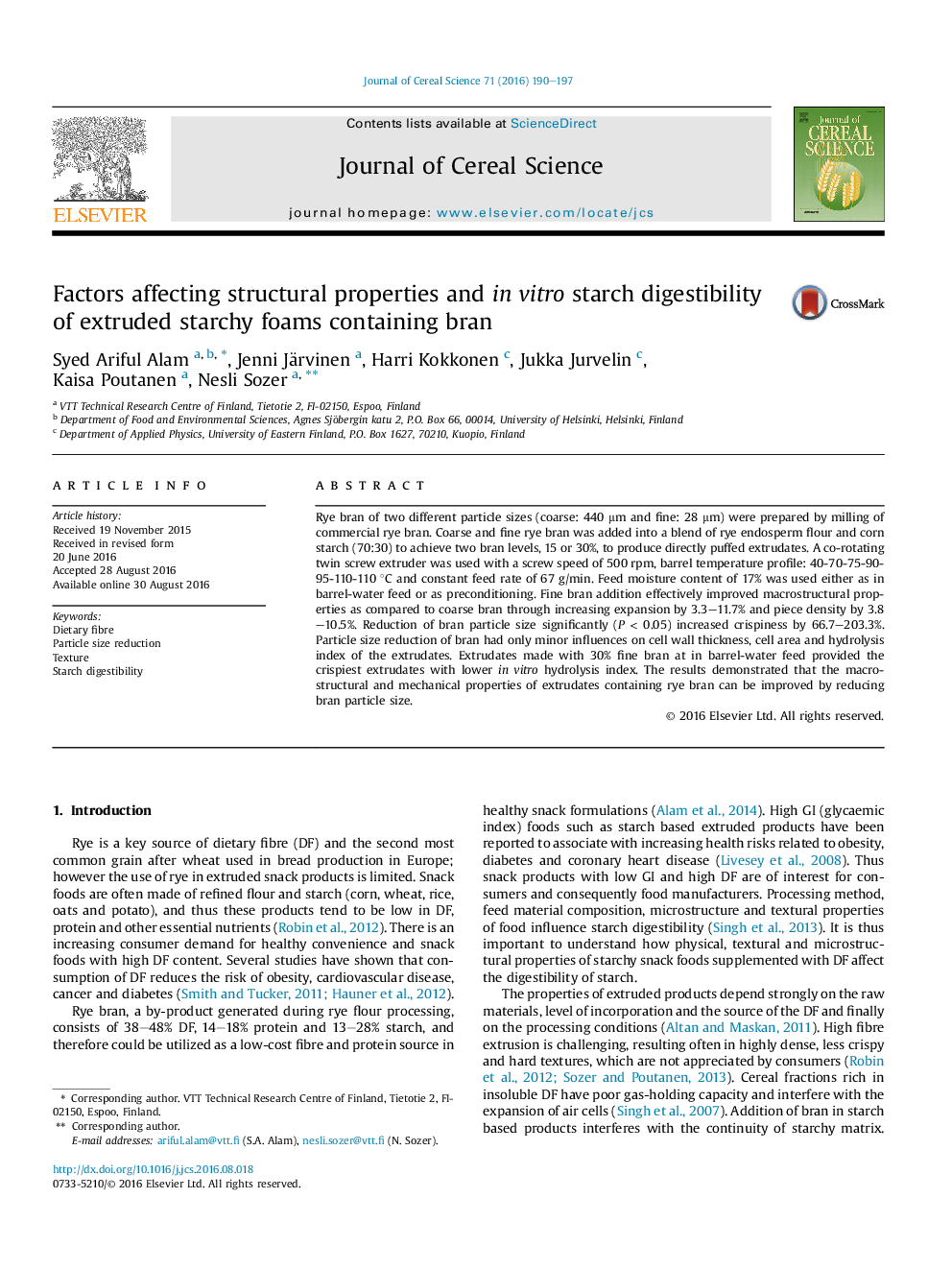| Article ID | Journal | Published Year | Pages | File Type |
|---|---|---|---|---|
| 4515539 | Journal of Cereal Science | 2016 | 8 Pages |
•Rye bran with particle sizes of 440 μm (coarse) and 28 μm (fine) was used.•Endosperm rye flour and corn starch was used as a carrier for 15 and 30% rye bran.•Bran particle size reduction significantly improved crispiness at 12.6% DF level.•Particle size reduction at DF level of 12.6% reduced in vitro starch hydrolysis.•30% fine bran at in-barrel water feed improved overall quality of extruded puffs.
Rye bran of two different particle sizes (coarse: 440 μm and fine: 28 μm) were prepared by milling of commercial rye bran. Coarse and fine rye bran was added into a blend of rye endosperm flour and corn starch (70:30) to achieve two bran levels, 15 or 30%, to produce directly puffed extrudates. A co-rotating twin screw extruder was used with a screw speed of 500 rpm, barrel temperature profile: 40-70-75-90-95-110-110 °C and constant feed rate of 67 g/min. Feed moisture content of 17% was used either as in barrel-water feed or as preconditioning. Fine bran addition effectively improved macrostructural properties as compared to coarse bran through increasing expansion by 3.3–11.7% and piece density by 3.8–10.5%. Reduction of bran particle size significantly (P < 0.05) increased crispiness by 66.7–203.3%. Particle size reduction of bran had only minor influences on cell wall thickness, cell area and hydrolysis index of the extrudates. Extrudates made with 30% fine bran at in barrel-water feed provided the crispiest extrudates with lower in vitro hydrolysis index. The results demonstrated that the macrostructural and mechanical properties of extrudates containing rye bran can be improved by reducing bran particle size.
